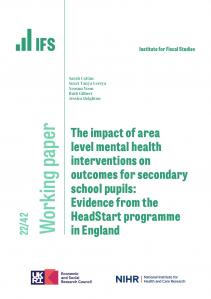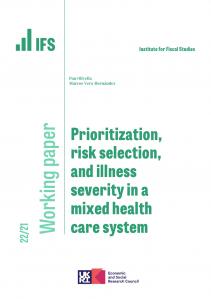In the Book of Genesis we read how Pharaoh was told in a dream that Egypt would enjoy "seven years of plenteousness" followed by "seven years of dearth". In the recent Book of Darling we find a similar prophecy for Britain's public services, with the rapid increase in real funding that they have enjoyed since 2000 being whittled away steadily after the next general election.
Pharaoh needed help from Joseph to interpret his dream and - judging from his performance at Prime Minister's Questions on Wednesday - Gordon Brown needs some help to interpret his own Chancellor's Budget. Far from helping to prepare voters for the period of austerity to come, Mr Brown rubbished any suggestion that he was planning cuts. He rattled off a succession of multi-billion pound spending totals for the next four years and concluded: "That is public spending rises".
The figures did indeed show spending rising over the Treasury's next three-year Spending Review, increasing by more than 8% between 2010-11 (the last year of the current review) and 2013-14. But the figures he quoted were for spending in cash terms, taking account neither of rising prices nor of growth in the economy. This is a remarkably undemanding yardstick. Public spending has not fallen in cash terms in any year since 1947-48, including in the periods of belt-tightening under the last Conservative government about which Mr Brown complained so vociferously in Opposition.
The Prime Minister set the bar rather higher when characterising the Conservatives' spending plans in the last general election campaign. Labour's famous poster warning that "The Tories will cut £35 billion from public services" in effect defined a cut as any reduction in spending as a share of national income. This would mean cash spending growing less than about 5% a year in normal times. Defined in a comparable way now, the Budget projections for the next Spending Review imply a cut of £80 billion after three years, although this figure is inflated because the recession and low inflation have dramatically shrunk the expected cash value of the economy in 2010-11 .
A third way to characterise the outlook is to look at spending in real terms, in other words adjusting for inflation across the economy. The text of the Budget states clearly that "current" spending (which excludes capital investment) will rise by 0.7% a year in real terms over the three years of the Spending Review. Rather more coyly, it says that investment spending will "move to 1¼% of national income by 2013-14". This is in much the same way that the Titanic "moved to" a new level of the Atlantic in the early hours of 15 April 1912: the detailed figures show real cuts averaging 17.3% a year or around 40% comparing the last year of the next Spending Review with the last of this one.
Add the two together and the Budget shows total public spending set to fall by an average of 0.1% a year over the next Spending Review, a much less buoyant outlook than Mr Brown's rhetoric implied. The outlook for public services is bleaker still. Take into account rising debt interest bills, social security costs and other spending that the Treasury has little control over in the short term, and we estimate that the "Departmental Expenditure Limits" that cover central government spending on public services and administration will drop by 2.3% a year in real terms, or around 7% by the third year. They would need to be £26 billion lower in today's terms in 2013-14 than in 2010-11.
This figure is the starting point for the debate that Conservative health spokesman Andrew Lansley inadvertently launched on the Today Programme on Wednesday morning. He said that within Labour's overall spending envelope the Conservatives would protect the NHS, overseas aid and schools, and so other departmental spending would need to be cut by 10% rather than 7%. (In fact, protecting health alone would raise the cut needed elsewhere to 9.7%. Maintaining the current overseas aid target increases the needed cuts to 10.9% and protecting schools as well to 13.5%. But the Conservatives said subsequently that they would not in fact guarantee schools spending.)
With Health Secretary Andy Burnham telling Channel Four News on Wednesday evening that "we will continue to maintain growth in health spending", the great divide between the parties on public spending looks a lot narrower than the drama of Prime Minister's Questions suggested.
In the current fiscal and economic climate, we cannot be certain exactly how big a hole in the public finances the next Government will need to fill. But, whichever party wins, it looks certain that we will see significant cuts in departmental spending on any sensible definition over the next parliament at least. Some of the money could be raised by making social security benefits less generous, but there is still likely to be a squeeze on public services tighter than any we have seen since the last Labour government had to negotiate its spending plans with the IMF.
The challenge is clear, yet the leaders of both parties are desperate to avoid using the "c-word" if at all possible and the Government does not intend to announce a full set of spending plans before the election. The voters deserve to hear the parties debate exactly how they intend to make the necessary economies, yet neither is keen to be the first to set out its stall.








